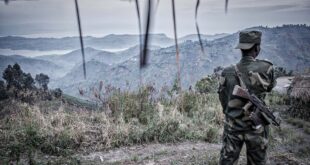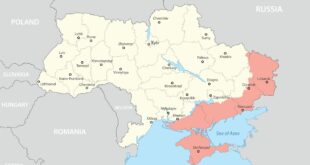By Shehab Al Makahleh • Follow @ShehabMakahleh
The United States, Russia and Jordan have agreed to foster a cease-fire in a limited area of southwestern Syria that will begin at noon on Sunday July 9, 2017.
The cease-fire agreement was announced Friday by Secretary of State Rex W. Tillerson and his Russian counterpart Sergey Lavrov after a face-to-face meeting between US President Donald Trump and President Vladimir Putin of Russia.
During Friday meeting in Hamburg, which lasted for 2 hours and 16 minutes, the two leaders’ first face-to-face encounter, the pleasantries and handshakes between Trump and Putin bloomed into a substantive discussion about the U.S.-Russian brokered cease-fire in Syria. It sounds that the Russians have won their war in Syria! As they have already announced before the launch of G20 meetings, the aim of the meeting between Putin and Trump were three main points: first – to publicly mend the relationship between two nations, second – to better understand the American policy, and third – to discuss issues of common concern including extremism and terrorism. They scored on all three.
Both the US and Russia have agreed during the presidential meeting that “Russia would be responsible for policing a new de-escalation zone” in south-west Syria, after the deal was reached in cooperation with Jordan, following a meeting of high level security officers from the US, Russia and Jordan, in Amman end of June, which led to the announcement along with the creation of two surveillance centers. The first of which is to be set in Jordan, operated by Jordanians and Russians, the second will be in south-west Turkey by the Syrian borders, and operated by Turkish and Russian officers.
“Security in SW Syria de-escalation zone will be ensured by Russian military police in coordination with US and Jordan,” Russia’s embassy in the US said in a statement.
The US Secretary of State had earlier declared the ceasefire to be the “first indication of the US and Russia being able to work together in Syria”.
The deal includes “securing humanitarian access and setting up contacts between the opposition in the region and a monitoring centre that is being established in Jordan’s capital,” Russia’s Foreign Minister, Sergey Lavrov said.
The United States has made a commitment that all the groups present there will observe the ceasefire,” he added.
It is noteworthy that the meeting in Hamburg on the sidelines of the G20 Summit consumed an extensive 2 hours and 16 minutes, most of it focused on Syria. The discussion, which included Secretary of State Rex Tillerson and Russian Foreign Minister Sergey Lavrov and two translators, was described as productive, although, as expected, accounts from each country about what was said by Trump and Putin differed in key respects.
The two leaders appeared to make more assertive strides on shared worries about Daesh and other extremists operating in the Middle East, and the destabilizing and endless civil war in Syria. However, enforcement of the regional cease-fire, which was brokered by Russia, the United States and Jordan, remains a subject of continuing talks for perhaps another week until an agreement is complete.
The agreement came after months of negotiations among the three countries with important pieces of the deal remained to be hammered out in the coming days. The agreement hinges on a boundary line — as set by the United States, Russia and Jordan — between areas of control for the warring forces and state proxies. But outlawed factions — including Al Qaeda — could refuse to abide by the agreement and even actively work to undermine it.
Lavrov later said the cease-fire would take effect from midnight to noon local time on Sunday in the areas of Daraa, Quneitra and Sweida in Syria along the Jordanian border. “At first, security around this de-escalation zone will be guaranteed by the forces and means of the Russian military police, in coordination with the Americans and Jordanians.”
The deal is separate from “de-escalation zones” that were to be created under a deal brokered by Russia, Turkey and Iran earlier this year.
The Americans and the Russians did not discuss the future of the Syrian President Bashar Al Assad; however, the agreement is deemed a blueprint for other parts of the country. This area in the south is the first show of success that would be replicated elsewhere in the other three de-escalation zones.
The deal marks a new level of involvement for the US in trying to resolve Syria’s civil war, which pits forces loyal to Syrian President Bashar Al Assad and Iranian allies against US supported groups.
Last May, a separate deal to create “de-escalation zones” was brokered by Russia, Turkey and Iran, but not the U.S.
Shehab Al Makahleh is the Co-founder of Geostrategic Media, Media Expert and Political Analyst
 Geostrategic Media Political Commentary, Analysis, Security, Defense
Geostrategic Media Political Commentary, Analysis, Security, Defense




